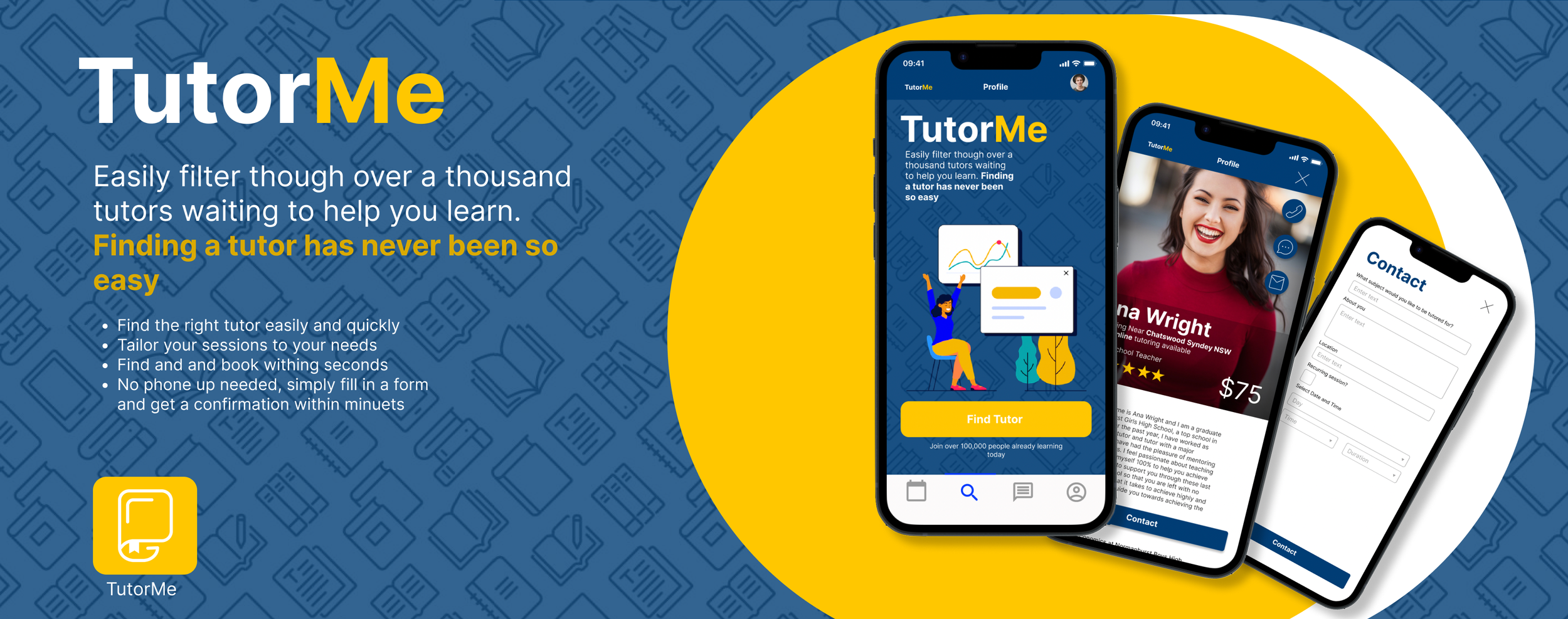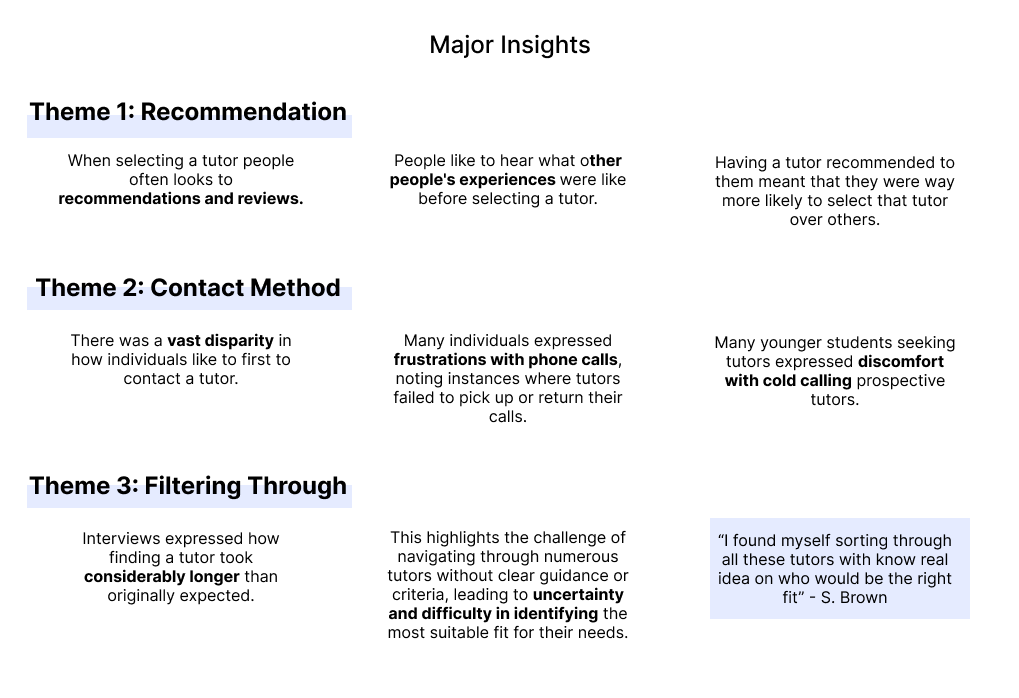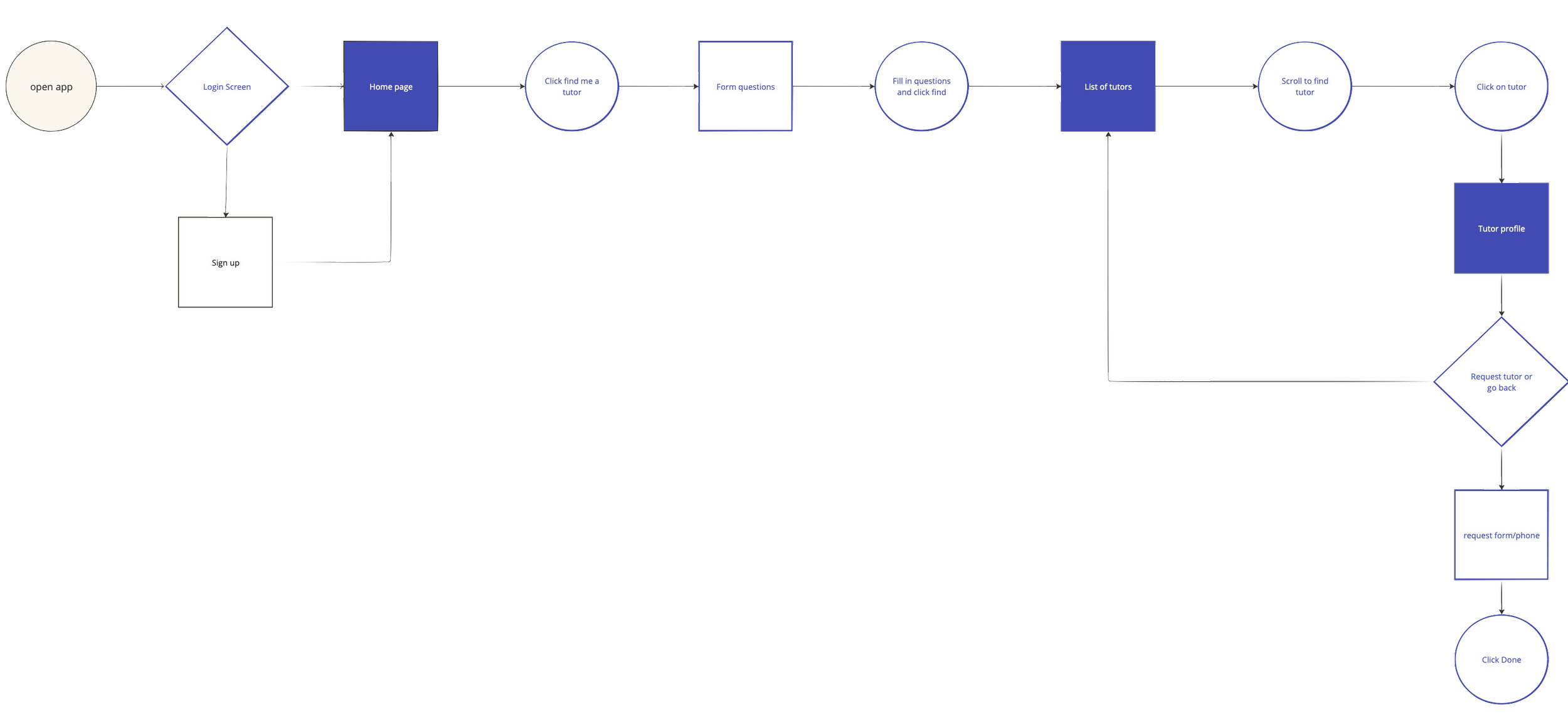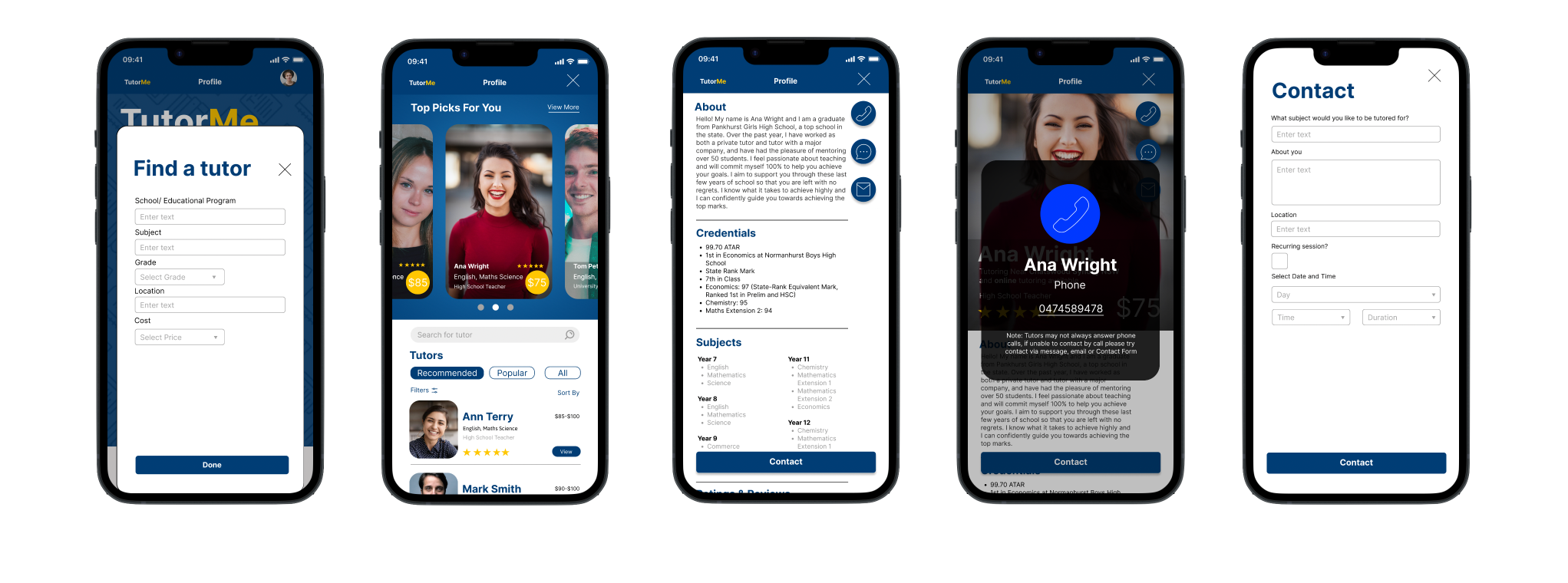Project Overview
TutorMe revolutionises educational support with its innovative approach, swiftly connecting users with proficient tutors tailored to their needs. Through precision in tutor selection and a user-centric interface, it streamlines the process of accessing optimised tutoring services for learners at all levels and pursuits.
Project Challenges
1) Design a system to cater to users across diverse educational platforms, facilitating seamless tutor connections.
2) Develop an intuitive filtering feature for efficient tutor selection to meet varied learning needs.
3) Create a multi-contact system to accommodate different users’ needs.
4) Engineer a solution prioritising speed and effectiveness in matching users with suitable tutors, optimizing the tutoring process.
The Problem
Project Brief
Design an App that allow users to easily and quickly find and contact tutors
My Role
Solo Student Project (Googles UX Design Certificate, Project 1)
Timeline
1 December 2023 - 5 January 2024 (5 Weeks)
Competitors' products have demonstrated a lack of comprehensive consideration for individual user requirements, highlighting an opportunity for our tutoring app to excel in catering to personalised needs.
Within the landscape of existing competitors, there exists a gap in attentiveness towards the individualised requirements of users. From my research, I found that there is a serious lack of consideration for personal needs when selecting a tutor, leading individuals to sort through a number of tutors themselves until they find the right one. Additionally, there is a consistent lack of consideration regarding contact methods on other platforms, neglecting to offer a diverse range of booking options that cater to users' preferences and convenience.
The Solution
TutorMe Final Solution
White Paper Research
In an unregulated Australian tutoring industry, the challenge of finding a suitable tutor is amplified, leaving individuals uncertain about the qualifications and suitability of potential tutors for their needs.
The Australian tutoring Industry is unregulated meaning that anyone can present as a tutor. This is quite a problem, especially given the current climate which has seen an explosion in the number of tutors, especially online. Many people see tutoring as an easy way to make some extra money, especially if it can be done from home. Of course, some of these tutors are excellent, whilst others will not be so good..
Competitive Audit + The Gap
None gave recommendations to you through reviews and suitability.
While keeping the above in mind, I analysed 4 of the most popular tutor finder platforms and found that almost none of them gave recommendations based on reviews and suitability, meaning your search for a tutor is only extended as you have to sort through each individual profile until you have found one that is best suited for you.
User Interviews
Users felt frustration having to sort through each tutor
Although I saw from my research that considering individual requirements was important, I further delved into the matter by conducting interviews with four parents of tutored children and four students currently receiving tutoring. Through a series of questions, I aimed to gain insights into their experiences and challenges encountered during the tutor selection process.
1. Tell me the process you used to find your tutor, And how long did it take you?
2. What criteria did you consider when initially searching for a tutor for your child/yourself?
3. Can you describe any challenges or frustrations you encountered during the process of finding a suitable tutor?
4. What did you think these platforms were lacking? And why?
5. Can you share any positive or negative experiences you've had with tutors in the past, and how they influenced your approach to selecting a tutor this time?
The Main Insights
Testing + Improvements
3 major changes to my design
The vast majority of individuals I interviewed expressed a reliance on recommendations or reviews when evaluating potential tutors.
Based on the trends in my affinity map, I noted how other tutor finder platforms only listed tutors and gave no real consideration to what people look for in a tutor. Interviewees said that this meant finding a tutor took a lot longer than expected.
Design Ideation
Using insights to explore user flow
To kickstart my design process, I aimed to delve into the user journey within my app, ensuring the implementation of the most practical and user-friendly design was implemented.
Drawing from feedback collected from both peers and user testing sessions, I iterated and refined my design to address various concerns and enhance usability. This iterative process resulted in several significant changes to the design, with three key modifications standing out as noteworthy advancements.
The Final Screens
The Final Product
Reflection
What I would do differently next time
Thank you for reading!
This was my first UX design project. More than the actual output, however, I am immensely grateful to have been through an entire UX process so I can see what it is actually like. On that note, a few things I have learnt:
Iterate as much as you can - In the early stages, I explored many different ideas and concepts. However, I soon realised that my designs tended to gravitate towards simplicity, lacking the innovative and unconventional elements I wanted. This initial direction resulted in a design that appeared rudimentary and lacked the distinct characteristics expected of an app. Consequently, I had to pivot later in the design process to introduce enhancements aimed at enhancing the visual appeal and functionality of the app. - No idea is a bad idea, get as many ideas as possible down and the more obscure the better.
Focus on what is important - I believe that during the design process, I focused too much on the additional features the app could offer, neglecting its core functionalities. I got carried away with creating numerous impressive features and lost sight of what truly matters. However, revisiting my insights and prioritising the essential ones helped me to stay on course and avoid veering too far off track during the design process. - Always keep your main insight in mind when designing.
Consider colours and typography - When I began designing, I didn't give much consideration to the colours and typography I would use. This resulted in inconsistencies in my design, with various fonts differing in size and thickness. - Always consider colours and typography before you start adding text and colour.
Try and test different things - When iterating on my design, it was crucial to experiment with different approaches to enhance both the appearance and functionality. One successful change I made was relocating the contact buttons to the side, allowing them to scroll with the page. I believe this adjustment significantly improved both the design and its functionality, and it was because I tried to explore different ways that those buttons could work. - Don't hesitate to make improvements to your design whenever necessary.







